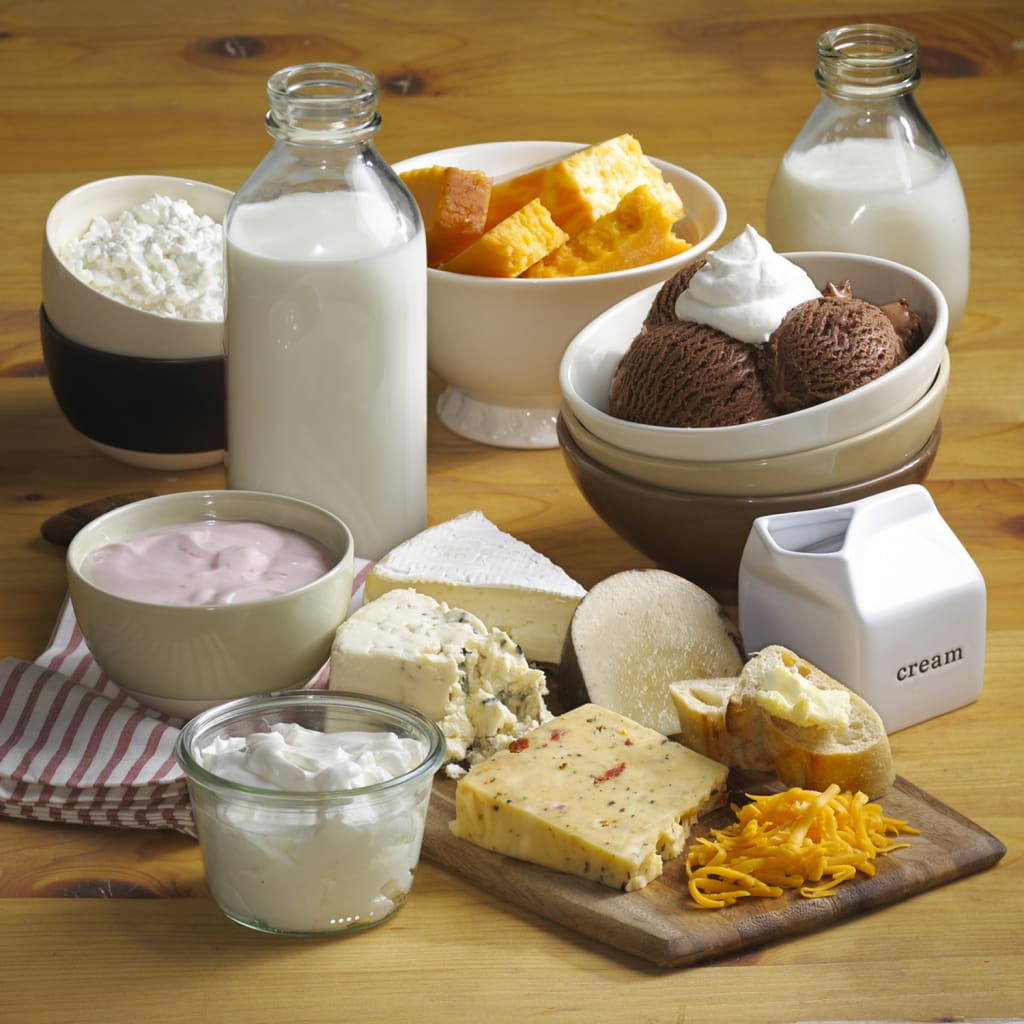
A variety of cultured dairy foods that you can make at home. These delicious creations not only taste great but also offer numerous health benefits. Here are some recipes and ideas:
Yogurt:
Yogurt is a classic cultured dairy product made by introducing live bacteria (such as lactobacillus) into fresh milk. The bacteria convert lactose (milk sugar) into lactic acid, resulting in the characteristic tangy flavor. To make it heat milk to around 110°F (43°C), mix in a yogurt starter (which contains beneficial bacteria), and let it ferment for several hours until thickened.
Cheese:
Cheese comes in various types, from soft to hard. One simple cheese you can make at home is Paneer (Indian cottage cheese). Paneer is versatile cheese that works great in savory dishes To make it Heat milk until it boils, add lemon juice or vinegar to curdle it, strain the curds, and press them to form a block of fresh cheese.
Or you can make the most popular cheese in the world, mozzarella. In a large saucepan, over medium heat, warm the milk to 115°F (46°C). Turn off the heat and add the acid of your choice (vinegar or lemon juice). Gently stir for 2-3 minutes until the curds fully separate from the whey. You’ll see distinct golden whey and curds. Wearing gloves, tear off a piece of curd and place it on a slotted spoon. Dip the curd into the hot whey for 5 to 10 seconds. Stretch, fold, and knead the curd until it becomes smooth and elastic. Be careful not to overstretch, as it can result in a dry, hard cheese. Knead in your preferred salt. Form the curd into a ball.
Sour Cream:
Sour cream is a tangy, creamy condiment to make it, mix heavy cream with a bit of buttermilk or yogurt, cover it, and let it sit at room temperature for 12-24 hours. Cultured cream is similar to sour cream. Mix heavy cream with a bit of buttermilk or yogurt, cover it, and let it sit at room temperature for 12-24 hours.
Whipped Cream:
Making whipped cream at home is such a breeze. Start with cold heavy cream. The colder the cream, the easier it will whip. In a large mixing bowl, combine the cold heavy cream, sugar (to sweeten), and a splash of pure vanilla extract. Use a hand mixer or a stand mixer with the whisk attachment. Mix on medium-high speed until medium peaks form.
Butter:
Making butter at home is a fun kitchen experience. Pour the heavy cream into a clean Mason jar. Seal the jar tightly. Shake the jar vigorously for about 5 to 10 minutes. The cream will separate into buttermilk and butter. Strain off the liquid buttermilk and press the butter into a bowl. Season with salt as desired.
Buttermilk:
Buttermilk is a cultured dairy product with a slightly sour taste. To make it, mix milk with a small amount of buttermilk (as a starter culture) and let it ferment for several hours.
Cottage Cheese:
Making cottage cheese at home is surprisingly easy, and the result is a fresh, creamy cheese that you can enjoy in various dishes. In a medium pot over low heat, slowly bring the milk to 180°F. When you see the edges start to foam, remove the pot from the heat. Add the vinegar or lemon juice to the milk and stir to combine. Cover the pot and let it sit at room temperature for about 30 minutes. During this time, curds will form. Transfer the mixture to a mesh strainer or colander lined with cheesecloth. Allow the whey (liquid) to drain off for approximately 5 minutes. You can reserve the whey for other culinary uses. Rinse the curds under cold water until they are completely cool. Use your hands to gently squeeze out any remaining whey. Transfer the dry curds to a medium mixing bowl. Add the kosher salt and use your fingers to break the curds into smaller pieces.
About the Creator
M.L. Lewis
Welcome to my little slice of pie. This blog will primarily focus on prepping and homesteading skills with a sprinkle of fiction every now and then.
Enjoyed the story? Support the Creator.
Subscribe for free to receive all their stories in your feed. You could also pledge your support or give them a one-off tip, letting them know you appreciate their work.






Comments (1)
It would be happy when making dairy food.